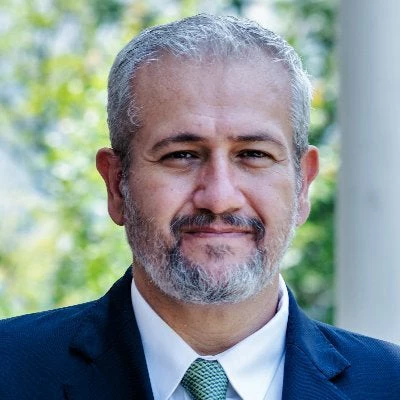 Community consultations determining location of an electric fence to protect Wathupolagama village from wild elephants. Photo: Danushka Wickramarathne
Community consultations determining location of an electric fence to protect Wathupolagama village from wild elephants. Photo: Danushka Wickramarathne
A new development paradigm is emerging which aims for a post-pandemic economic recovery that is more sustainable and resilient to shocks and leaves no one behind. The World Bank’s new approach is called Green, Resilient and Inclusive Development, or GRID, which seeks to support clients to holistically address the related crises of climate change, COVID-19, and inequality.
Even before the pandemic, governments and development partners were already adopting greener and more socially inclusive policies and investments. For example, in Sri Lanka it is no longer enough to connect point A and B with an improved road. We must consider the farmers that live along the road and how it can help them bring produce to markets. At the same time, we need to consider the wild elephants that must cross this same road to get to their seasonal grasslands and wewas, as well as climate resilience measures to protect roads from flash- and seasonal floods. The GRID approach enables us to take this to a much greater scale.
The Ecosystem Conservation and Management Project (ESCAMP), currently under implementation by Sri Lanka’s Forest Department and Department of Wildlife Conservation, offers early experience and lessons for taking the GRID approach to scale. We want to highlight some practices that offer multiple benefits and a multiplier effect to the Sri Lankan economy.
- Landscape Planning and Management Framework. ESCAMP pioneered the integration and coordination of competing developmental interests in support of an important nature-based economy. Two landscape management plans covering 10 percent of the country—home to about 1 million people—provide a platform for integrated land and resource management. Working at Divisional Secretariats’ level, ESCAMP coordinated development and conservation activities with almost 60 government agencies and two other investment projects: the World Bank-financed Climate Smart Irrigated Agriculture Project and the UNDP’s Climate Resilient Integrated Water Management Project. ESCAMP is now working on adopting and institutionalizing this framework at the national level, building on Sri Lanka’s traditional concept of harmony between the nature and people (ගමයි, පංසලයි, වැවයි, දාගැබයි).
- Supporting rural livelihoods and human-elephant co-existence. About 80 percent of Sri Lanka’s population lives in rural areas, with an estimated three to five million people living in or around forests. But rural areas fall behind in development, connectivity, and accessibility to basic services and economic opportunities. As a result, more than 90 percent of the rural population is poor. Evidence shows that modernizing protection, restoration, and sustainable management of forest resources has a multiplier effect for the economy and rural communities. Rural jobs and livelihoods created in the forest sector are green and sustainable and provide goods and services to other sectors of the economy. Sri Lanka’s forests directly sustain or contribute to tourism, which brought $3.6 billion in foreign exchange earnings in 2018. They contribute to crop cultivation, which generated the equivalent of $2.5 billion in 2019. They also play a substantial role in sustaining hydropower generation, which accounted for 37 percent of total electricity production in 2018. And, of course, they are critical to regulating local weather and water flow and in helping prevent natural disasters. About 11,000 rural people directly benefitted from ESCAMP support for the development and implementation of 59 community action plans on rural livelihoods (cash crops, honeybee keeping, sewing machines, poultry and animal husbandry, energy saving stoves). About 51 percent of these beneficiaries are women living in the buffer zones of Protected Areas. By introducing the innovative approach of using community-based village and paddy field electric fences, the project was able to protect lives, property, and crops from wild elephants. An early warning system and wild elephant insurance scheme have been successfully tested. Thirty-four collars have been placed on elephants to gather scientific data and now it can be used for designing safer road crossings for elephants and for designing green infrastructure in the Inclusive Rural Connectivity and Development Project.
- Building capacity for sustainable management of forest landscapes. The World Bank recognizes the critical role of forests for a Green, Resilient, and Inclusive recovery and development in Sri Lanka. The Forest Department is leading the preparation of the new Forest Sector Masterplan 2021-2030 and its 11 associated investment programs. This transformative policy prepares investments under three of 10 Key Policies of the President’s Manifesto: Sustainable Environmental Management, People-Centric Economy, and Dialogue with the Village. It aims to increase the extent of the national forest resources and ecosystem services, generate new jobs in rural areas, reduce the climate and natural disaster risks, introduce different collaborative and inclusive management options of forest resources for small businesses, and contribute to the government’s fulfillment of national and international obligations.
Imagine if Sri Lanka’s forests landscapes and resources were not only better conserved, but also restored and better managed to realize the full potential of ecosystem services and material resources across the economy – for rural livelihoods, tourism, farming, construction, producing furniture, hydropower, and effective disaster risk management. The GRID approach offers a pathway to make this vision a reality. We can see the seeds of this approach already taking root in Sri Lanka.






Join the Conversation